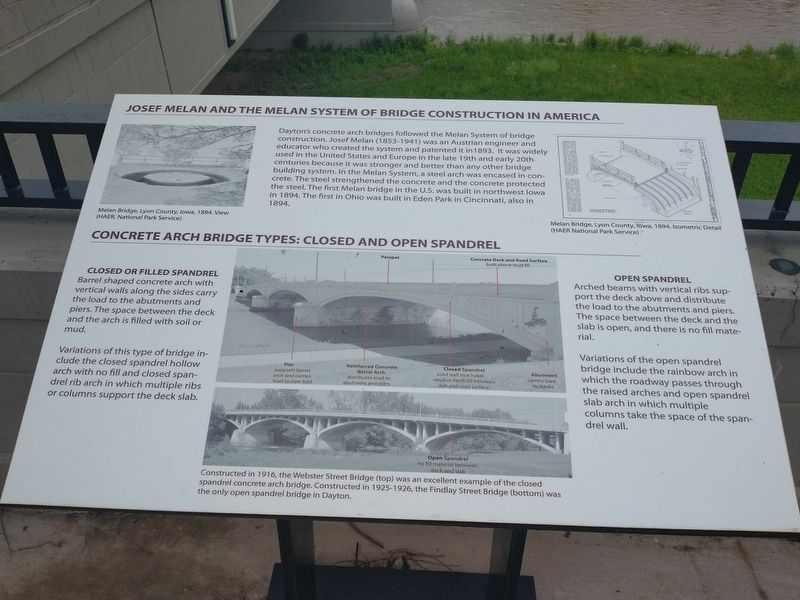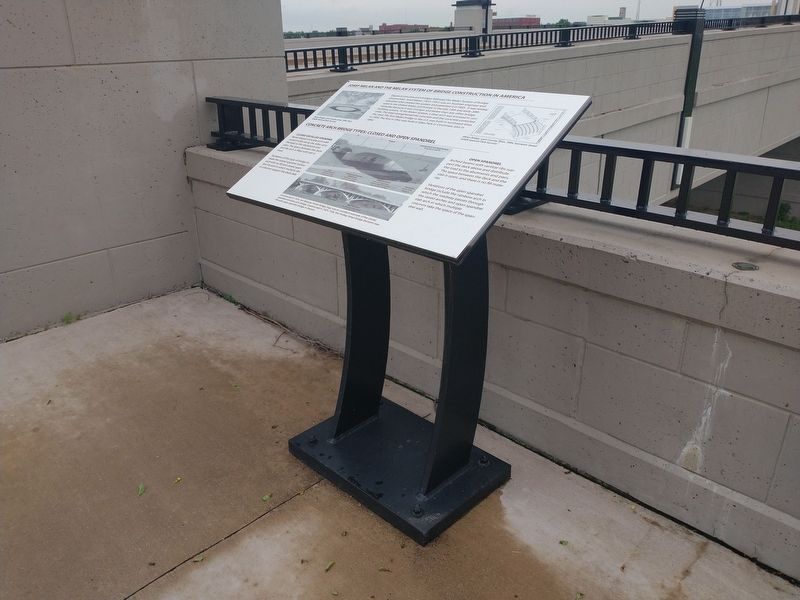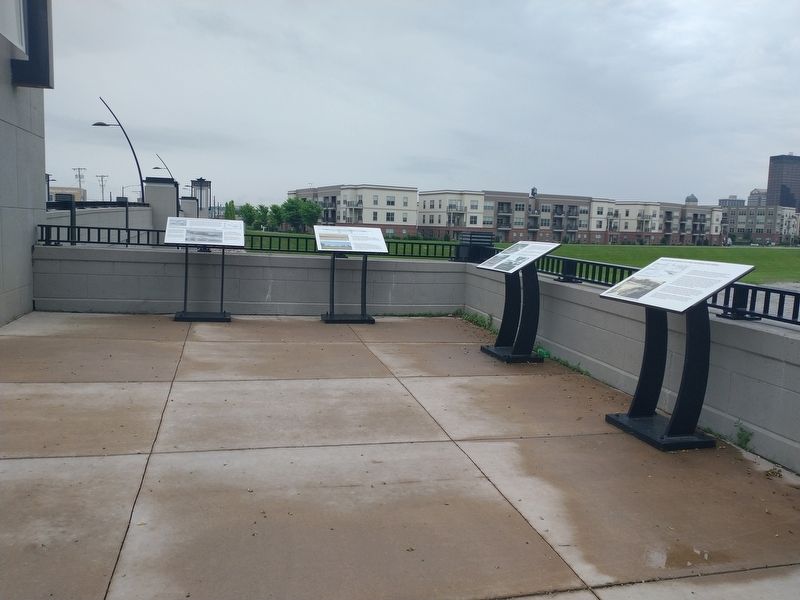McCook Field in Dayton in Montgomery County, Ohio — The American Midwest (Great Lakes)
Josef Melan and The Melan System of Bridge Construction in America
Inscription.
Dayton's concrete arch bridges followed the Melan System of bridge
construction. Josef Melan (1853-1941) was an Austrian engineer and
educator who created the system and patented it in 1893. It was widely
used in the United States and Europe in the late 19th and early 20th
centuries because it was stronger and better than any other bridge
building system. In the Melan System, a steel arch was encased in con-
crete. The steel strengthened the concrete and the concrete protected
the steel. The first Melan bridge in the U.S. was built in northwest lowa
in 1894. The first in Ohio was built in Eden Park in Cincinnati, also in
1894.
Melan Bridge, Lyon County, lowa, 1894. View (HAER, National Park Service)
Concrete Arch Bridge Types: Closed And Open Spandrel
Closed Or Filled Spandrel
Barrel shaped concrete arch with vertical walls along the sides carry the load to the abutments and piers. The space between the deck and the arch is filled with soil or mud.
Variations of this type of bridge in clude the closed spandrel hollow arch with no fill and closed span drel rib arch in which multiple ribs or columns support the deck slab.
Open Spandrel
Arched beams with vertical ribs sup- port the deck above and distribute the load to the abutments and piers. The space between the deck and the slab is open, and there is no fill mate- rial.
Variations of the open spandrel bridge include the rainbow arch in which the roadway passes through the raised arches and open spandrel slab arch in which multiple columns take the space of the span drel wall.
Constructed in 1916, the Webster Street Bridge (top) was an excellent example of the closed spandrel concrete arch bridge. Constructed in 1925-1926, the Findlay Street Bridge (bottom) was the only open spandrel bridge in Dayton.
Topics. This historical marker is listed in this topic list: Bridges & Viaducts. A significant historical year for this entry is 1893.
Location. 39° 46.139′ N, 84° 11.025′ W. Marker is in Dayton, Ohio, in Montgomery County. It is in McCook Field. Marker is on Webster Street, on the right when traveling south. Touch for map. Marker is in this post office area: Dayton OH 45404, United States of America. Touch for directions.
Other nearby markers. At least 8 other markers are within walking distance of this marker. A City Beautiful For The 21st Century (here, next to this marker); Engineering and Urban Art-Helena Street Bridge also Known As Island Park Bridge (here, next to this marker); Building Bridges-Fifth Street And Keowee Street Bridges (here, next to this marker); Webster Street Bridge Over Mad River (here, next to this marker); Dayton's New Bridges 2017 (here,
next to this marker); Hull's Rendezvous (a few steps from this marker); Icarus (about 700 feet away, measured in a direct line); Inventing Flight: The Centennial Celebration (about 700 feet away). Touch for a list and map of all markers in Dayton.
Credits. This page was last revised on February 4, 2023. It was originally submitted on June 12, 2022, by Craig Doda of Napoleon, Ohio. This page has been viewed 178 times since then and 26 times this year. Photos: 1, 2, 3. submitted on June 12, 2022, by Craig Doda of Napoleon, Ohio. • Bill Pfingsten was the editor who published this page.


